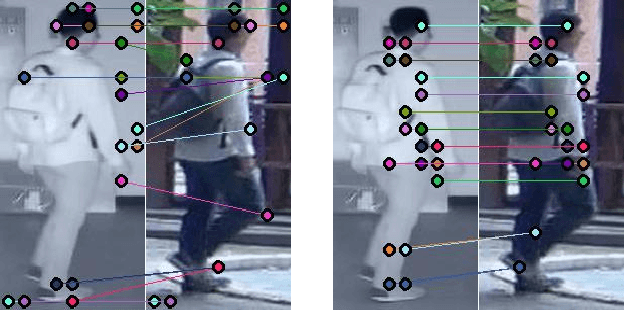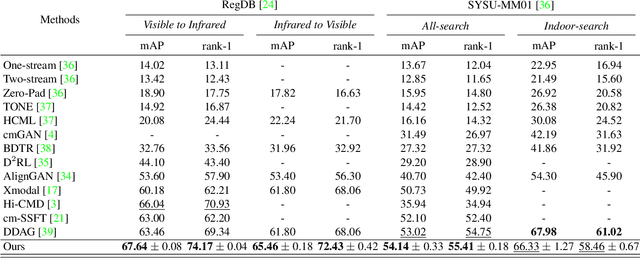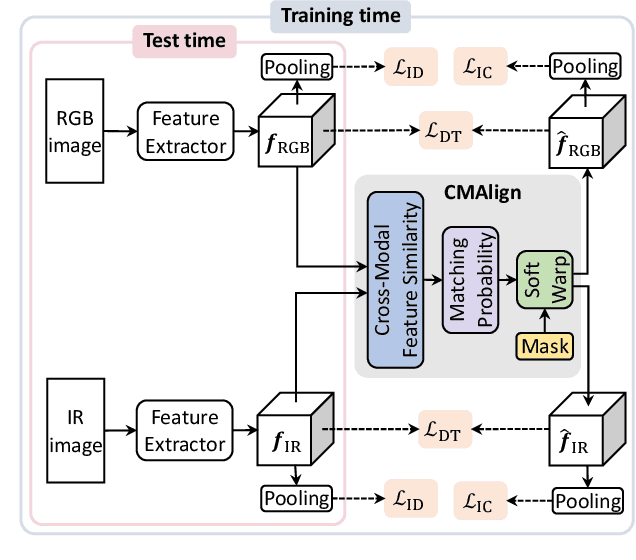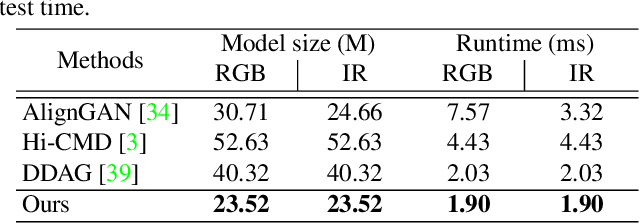Learning by Aligning: Visible-Infrared Person Re-identification using Cross-Modal Correspondences
Paper and Code
Aug 17, 2021



We address the problem of visible-infrared person re-identification (VI-reID), that is, retrieving a set of person images, captured by visible or infrared cameras, in a cross-modal setting. Two main challenges in VI-reID are intra-class variations across person images, and cross-modal discrepancies between visible and infrared images. Assuming that the person images are roughly aligned, previous approaches attempt to learn coarse image- or rigid part-level person representations that are discriminative and generalizable across different modalities. However, the person images, typically cropped by off-the-shelf object detectors, are not necessarily well-aligned, which distract discriminative person representation learning. In this paper, we introduce a novel feature learning framework that addresses these problems in a unified way. To this end, we propose to exploit dense correspondences between cross-modal person images. This allows to address the cross-modal discrepancies in a pixel-level, suppressing modality-related features from person representations more effectively. This also encourages pixel-wise associations between cross-modal local features, further facilitating discriminative feature learning for VI-reID. Extensive experiments and analyses on standard VI-reID benchmarks demonstrate the effectiveness of our approach, which significantly outperforms the state of the art.
 Add to Chrome
Add to Chrome Add to Firefox
Add to Firefox Add to Edge
Add to Edge